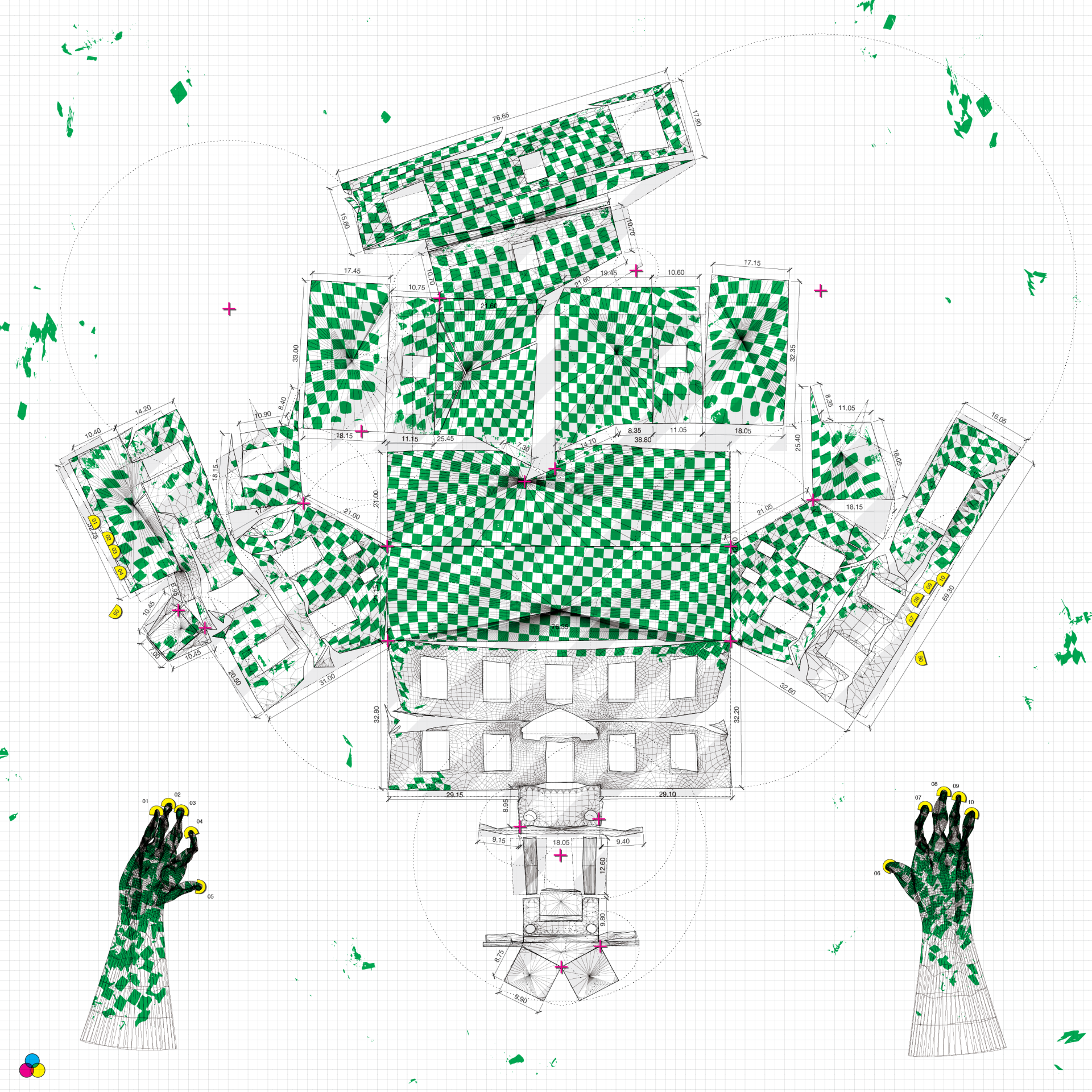ZACH SCHUMACHER
Digital Duck
A recent increase in computation literacy and extradisciplinarity has made us active participants in the flow of representational techniques — yet we continue to cheat architectural content in fear of being too literal.
Image
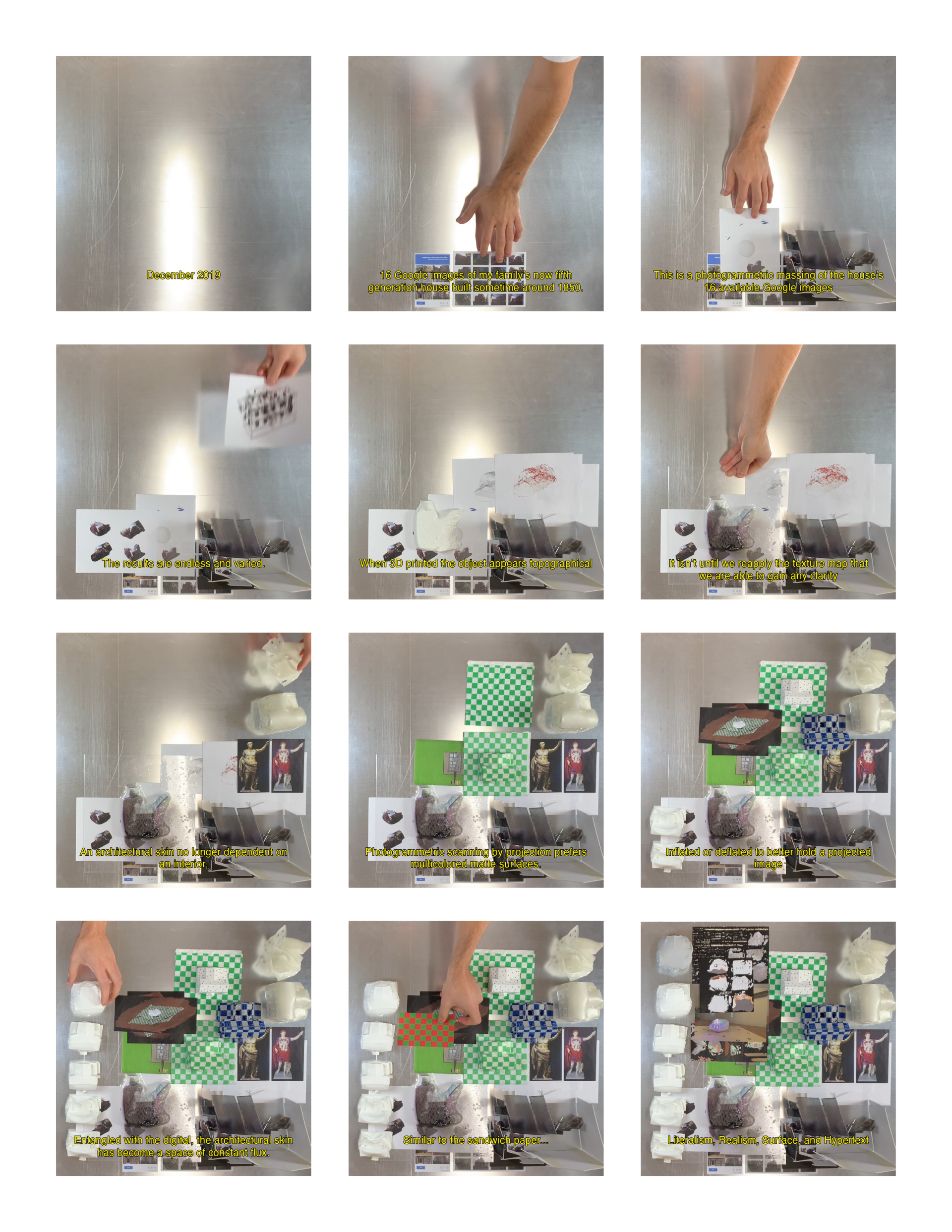
Video file
Image
Image
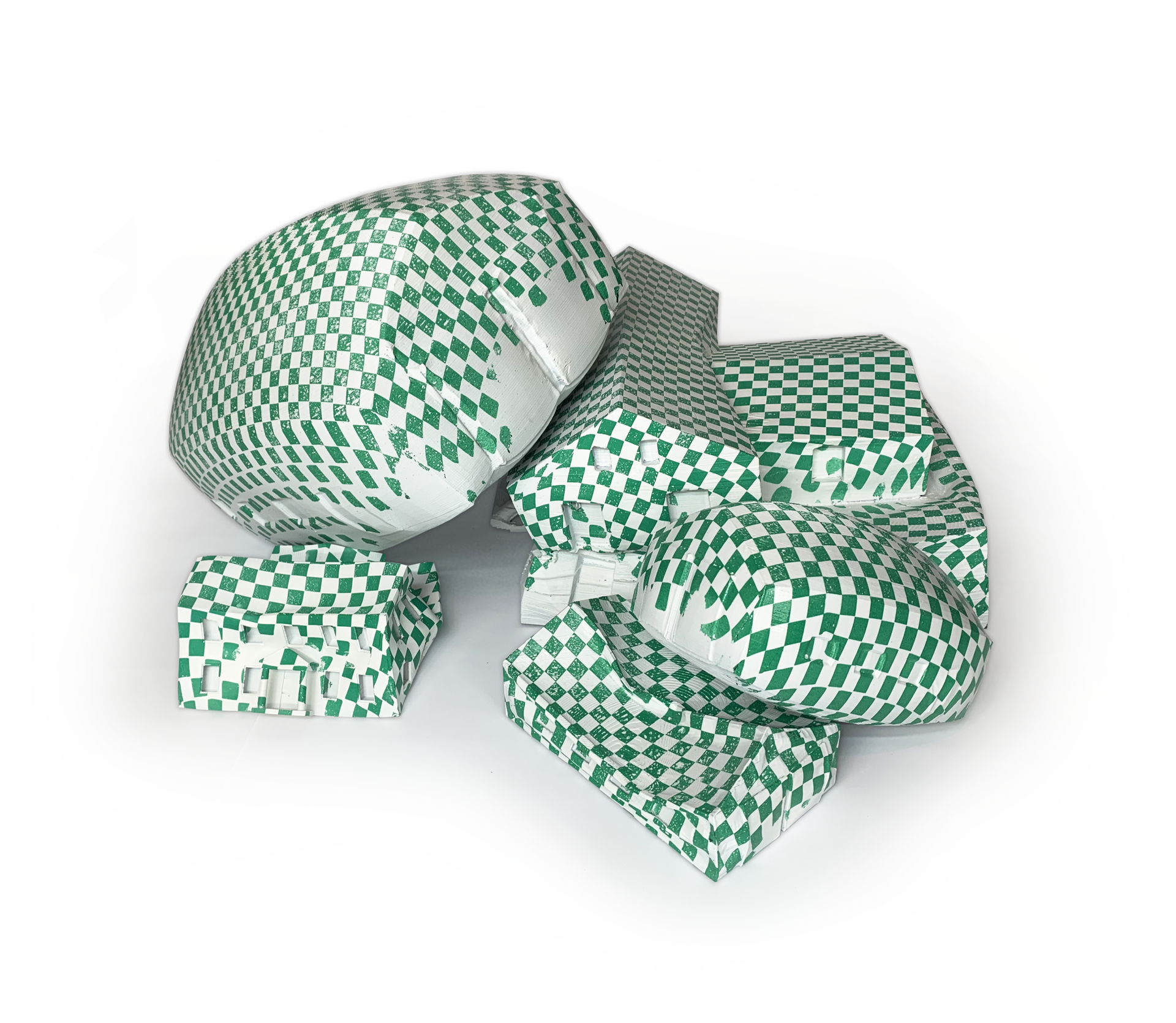
Image

Video file
Image

The unrolled developed surface drawing below of the deflated house is accompanied by the hydrodipper’s hands and the loose floaters within the bath. When separated the annotation layer provides a wireframe and an unrolled surface (or texture map) which is attempting to recover realism through a generative process, moving us into a broader range of representational techniques. Which is why the transaction between the green sandwich paper, the hydro dipper, and the architectural surface is so critical. They allow us to perhaps take a documentary tool that has been historically used to perpetuate fakery and make it generative. Course correcting from a disciplinary acceptance of fakery, to a recovery of techniques from other disciplines, and the ability to reference the values that those tools possess.
Hanging above a large bath in the back of an auto repair shop off U.S. Route 44, are a series of gun accessories and car parts tattooed with: multicolored camo, wooden textures, Playboy bunnies, and perhaps the possibilities and potentials surrounding the architectural surface. On the table below, a mechanic begins to trim a section of hydrographic transfer film modeled after his green and white sandwich paper. Although both the dipper and his sandwich may be initially dismissed by the discipline, these characters confront the gap between the computationally described object and the digitally constructed surface through its literalized texture map.
Flatness and surface may be seen as equivalent terms within the architectural and automotive context, but consider them within the broader cultural terms of literalism and realism. Literalism is a term or the reading of something fighting against interpretation rather than an experienced condition. Whereas, realism reveals the mechanism present in the construction of something. For example, consider the photogrammetric texture map and point-cloud of my family’s multigenerational house’s 16 available Google Maps images. It may be surprise that I would consider these blobs to be examples of realism, as the digital texture map could not be further away from the real, or the experienced reality of living in this house. However, this digitally rendered mass exemplifies the lies present when contemporary architecture pushes architecture to become more picturesque. These models are real not because they are visually real, but because the data points are real. Currently the transaction between the digital model and applied graphic are left unchallenged by the discipline due to the value they add to the rendered image — perpetuating the lie that photo-realism is real. Similarly, by sampling the same 16 available images and following David Hockney’s method of photo joining, we can achieve literalism by collapsing these images into a 2 dimensional plane. For me literalism is a crucial term for understanding the relationship between architecture and material composition. That being said, literalism is here to stop realism from lying so much.
Image
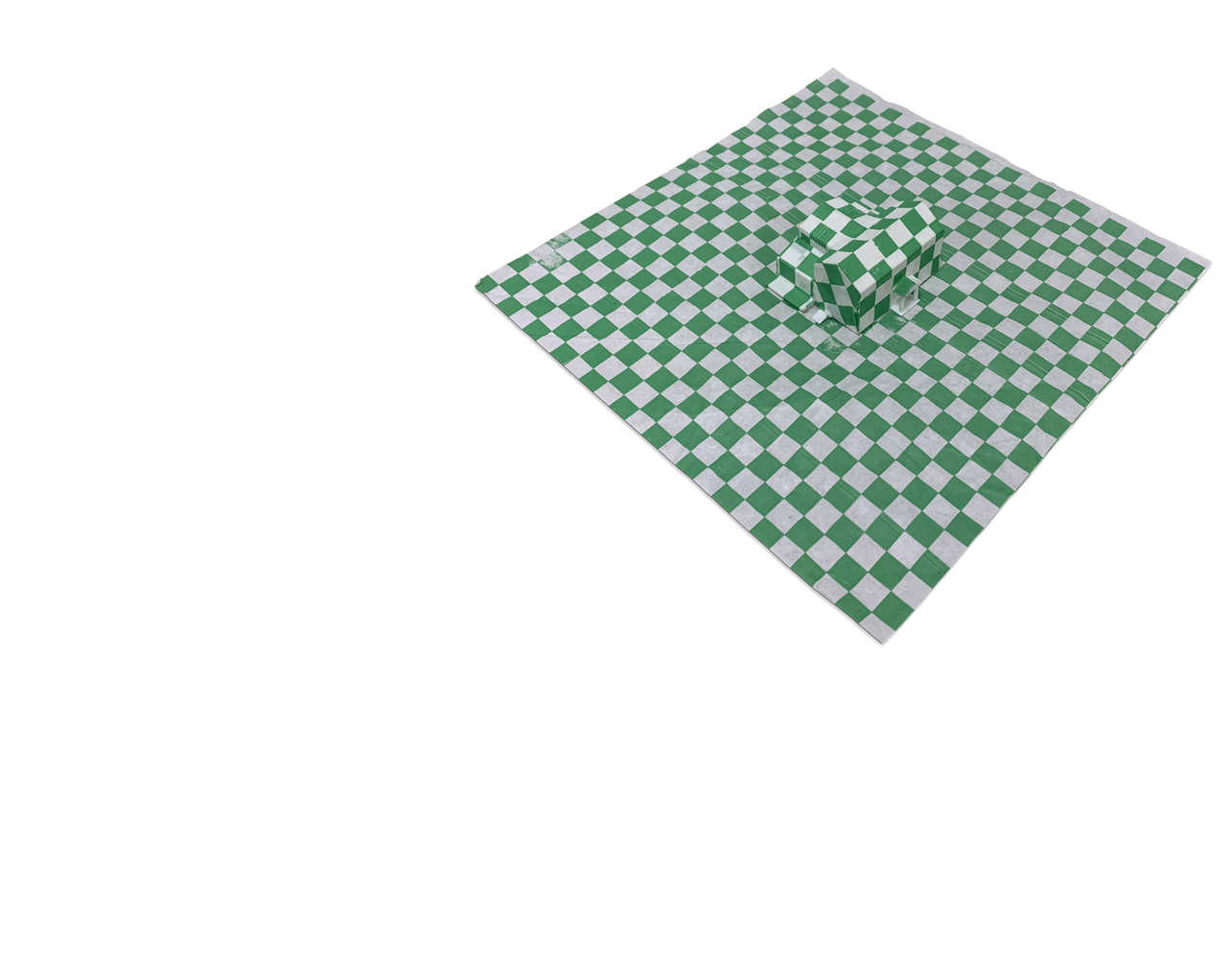
When speaking about the latent possibilities of architecture, we must discuss the tools, specifically the digital tools. Digital tools architects use to represent and realize projects are inseparable from the way we think. Digital representation is not merely a way of doing the same old thing faster, but an enormous shift in how architecture is conceived, represented, and understood. To complicate this further, these tools are almost always non-native imports brought into the discipline. Meaning these tools which shape our buildings come with their own baggage or residual values. For example, we are now in a time where architects are using video game engines and physics simulations as generative tools. This increased level of computational literacy, among other things, has led us into new extradisciplinary roles. Although this can be disorienting, it is also extremely exciting for the practice, we are becoming increasingly able to participate in a constant exchange with other disciplines, like the aftermarket automotive industry.
But the realm of aftermarket finishing has greater implications on the architectural discipline beyond just surface articulation. Especially within the unexplored territory when suturing pop culture and car culture onto architecture. Smuggled into this exchange, perhaps unwittingly, are the values of the hydro dipper and the realization that we both have a shared interest in registering surface articulation. One way to consider the surface texture is through the normals map, which heightens this misreading by generating a superficial relief or embossing of the surface to convince us of its material imposterness made possible here by airbrushing the multidirectional pattern.
Another way to consider a texture map is similar to that of a flayed skin, an indefatigable surface stretched upon a wireframe. Then once peeled back or unrolled we can reveal the capacity of the form and applied surface. Consider the process of hydrodipping when soliciting help from the aftermarket automotive industry. Emerging from the surface of the water along with the green checkered house are the hands which are also tattooed with the same green check, which clings to everything it comes in contact with. The hydrodipper's hands intersect the moment between: material composition, application, and fabrication method. The tattooed graphic on the hydrodipper’s hand is literalism. Perhaps, the automotive graphic can provide the opportunity to update facade games swerving us from talking about facade to talking about surface and perception. Moving us into a broader range of representational techniques as a means to formalize ideas into a physical environment satisfying the desire for further complexity and performance.
Video file
Image
